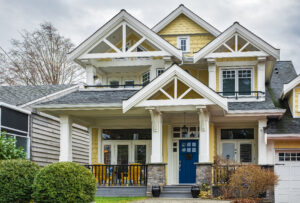Should You Use Low Emissivity Glass for Your Windows?
Feb 22, 2023Windows allow light to enter your home and reduce heat loss from the house, but few glasses can accomplish both functions. Low emissivity (low-E) glass is a rare type that prevents energy loss from your home. Here is what you need to know about low-E glass.
What Is Low-E Glass?
The sun’s energy largely consists of ultraviolet, infrared, and visible light. Ultraviolet light is hazardous and can cause wall coverings and fabrics inside a house to fade. Infrared light consists of heat energy, while visible light contains colors visible to the naked eye. Many homeowners prefer to let in visible light but block infrared and ultraviolet light.
light consists of heat energy, while visible light contains colors visible to the naked eye. Many homeowners prefer to let in visible light but block infrared and ultraviolet light.
Glass materials can either absorb or reflect energy from the sun. The material’s ability to radiate heat energy is called emissivity.
Low-E glass has a thin, transparent coating that blocks infrared wavelengths but allows visible light to pass through. The coating also blocks most UV rays from passing through.
What Are the Types of Low-E Glass?
Low-E glass is available in either a soft coat or a hard coat. Glass manufacturers apply the hard coat just as the material comes out of the furnace. The coating then combines with the glass when cooling down. Since the coating is weak, window installers typically install the glass with the hard coat on the interior side of the structure.
Manufacturers create the low-E glass soft coats by allowing the material to cool down before applying the coat. The soft coat is highly vulnerable and requires double glazing for better performance and increased durability. Homeowners can easily clean soft coat low-E glass because the coating is within the double-glazing.
What Are the Benefits of Low-E Windows?
Expect the following benefits when you install low e windows:
Improved Energy Efficiency
 Windows are a major contributor to heat loss and gain in residential buildings. Inefficient windows allow excessive heat to enter the home in summer and fail to block the excessive loss of warm air from your home in winter. Windows with low-E glass prevent heat exchange between the interior and exterior of the home, leading to better energy efficiency.
Windows are a major contributor to heat loss and gain in residential buildings. Inefficient windows allow excessive heat to enter the home in summer and fail to block the excessive loss of warm air from your home in winter. Windows with low-E glass prevent heat exchange between the interior and exterior of the home, leading to better energy efficiency.
Alternative to Hurricane Shutters
Hurricane shutters protect windows during storms and hurricanes but require regular opening and closing. Some people also find the hurricane shutters not aesthetically pleasing. Low-E impact glass is a better alternative since you don’t have to open and close shutters all the time but can get visible light throughout the year.
Increased Indoor Visibility
Visible light still enters the home even if the windows block infrared light and UV rays. This step ensures that your home’s interior enjoys plenty of natural light throughout the day. Although a small percentage of visible light doesn’t get through the low-E glass, you can still enjoy the benefits of natural light from inside your home.
Decreased UV Radiation
UV light adversely affects the human body, so low-E glass windows protect your family’s health. The glass also prevents UV radiation from destroying furnishings inside the house. If the UV light enters the home, the radiation can cause bleaching on your fittings and carpets, leading to a loss of color.
How Do You Identify Low-E Glass Windows?
Since low-E windows have many benefits, some home sellers may claim that their homes have these windows. You can confirm the claim by holding a flame near the window. If the window is low E, you will see more than one reflection, one of them being a different color.
Once you select your preferred window type, reach out to a professional windows expert. 1st Choice Windows & Siding has extensive experience working with various window products for over 60 years. Our team of professionals can help you with any siding and window project. Contact us to get a quote.
